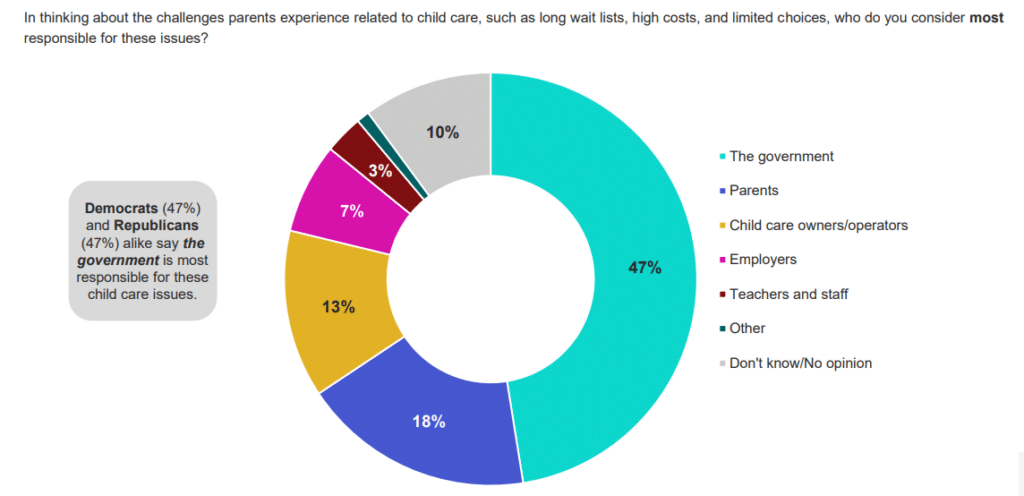10 Surprising Facts About Child Care in the United States
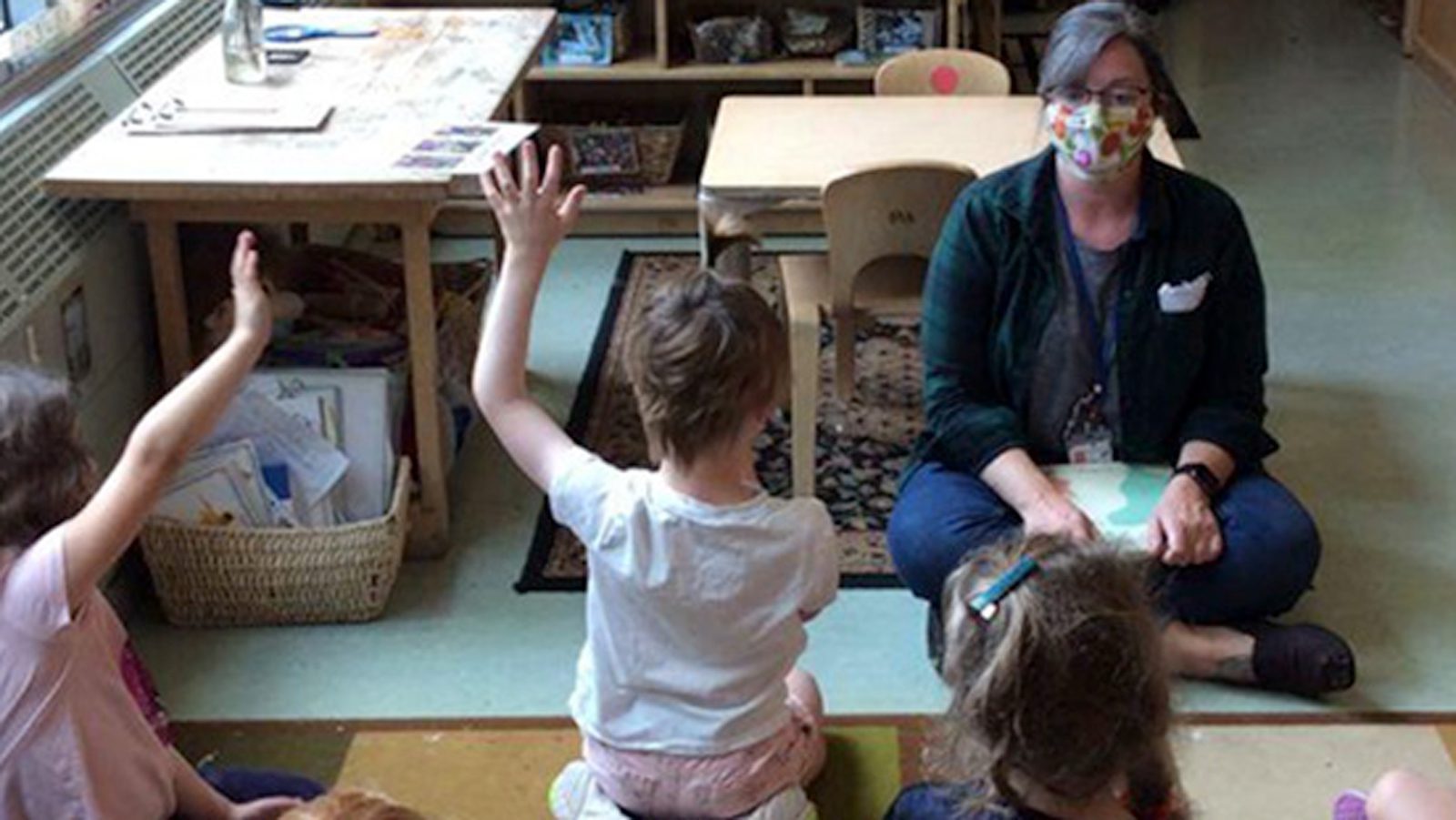
Key Takeaways
- Families face long wait lists and astronomical costs. Educators face burnout and low pay.
- Even prior to the pandemic, our country’s child care system was failing families.
- Advocates like you play a key role in urging Congress to support child care funding.
Parents hold the federal government accountable for child care challenges.
47% of parents say the government is most responsible for child care challenges, such as long wait lists, high costs, and limited options.
During COVID, the American Rescue Plan saved the jobs of more than 1 million educators and continued care for as many as 9.6 million children. Those funds have run out and Congress’ failure to secure additional funding for the child care system has set our child care system back to where it was.
In every state in the country, the cost of infant care is higher than the federal affordability standard.
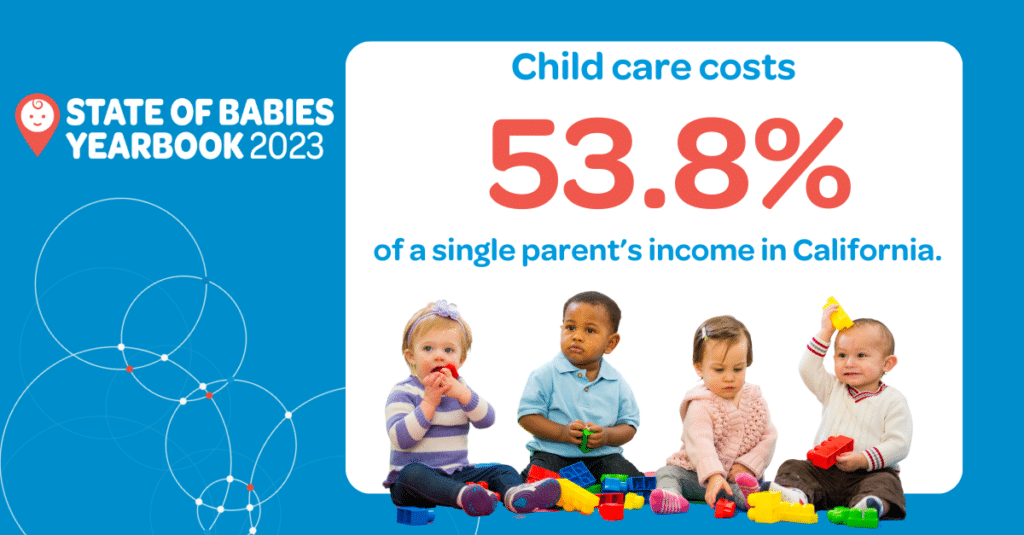
The cost of infant care ranges from 7.3% of a married family’s income in Mississippi to 16.7% in California.
State of Babies Yearbook data show child care costs in every state are higher than the federal affordability standard of 7% of family income. Even for families who can afford care, it is often difficult to access.
77% of families report having a hard time finding child care.
And it's not only due to the pandemic. Even prior to COVID, more than one-half of Americans lived in an area with more than three children for every one licensed child care slot.
But child care waitlists have drastically increased since the pandemic and its devastating effects on the child care system. One analysis found that the average length of a list has ballooned 28 percent from February 2020 to February 2023, growing from 185 children on average to 236.
Children sit on wait lists for months — ours and others’ — because there aren’t enough open spots or educators.
Latrice D., Parent and early childhood educator
Non-center-based care is the most common type of child care families use for infant and toddler care.
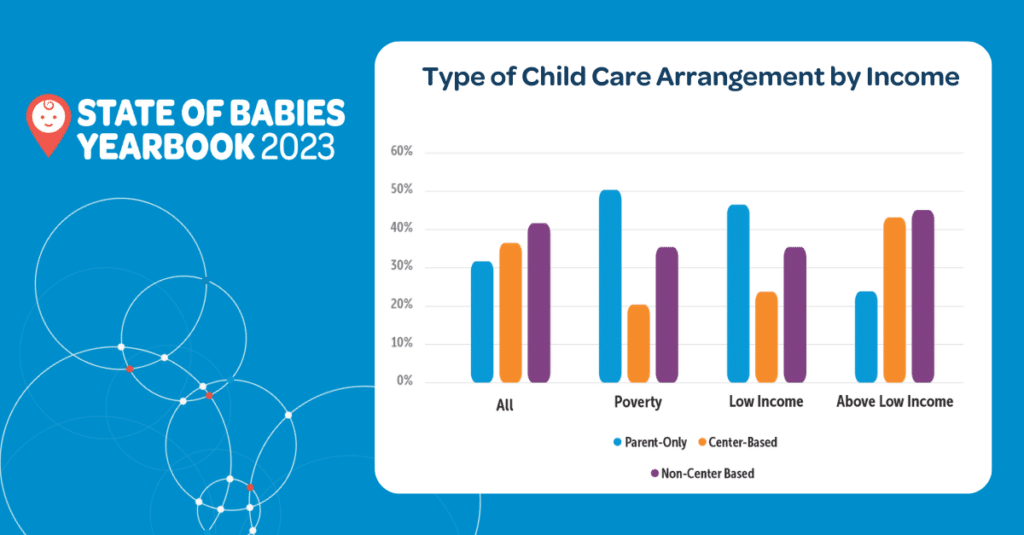
According to the State of Babies Yearbook, nearly one-half of babies and toddlers in a home-based setting are receiving care from an unpaid family, friend or neighbor caregiver with whom they have a previous relationship.
This is concerning given this type of care for infants and toddlers is often overlooked in quality initiatives, including those offering increased workforce supports and compensation.
The early childhood education workforce is paid so little that nearly half live in families that depend on public assistance.
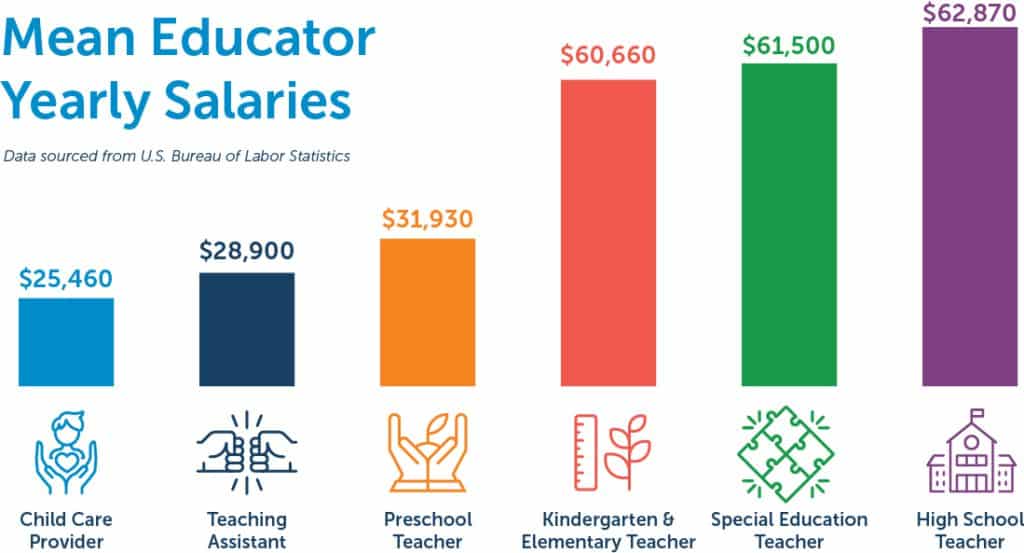
Salaries for early childhood educators are often lower compared to other professions requiring similar levels of education and responsibility.
Parents cannot afford to pay more than they already do. Government funding would help stabilize early educator jobs and help support child care programs by boosting wages.
Half of child care providers report experiencing burnout.
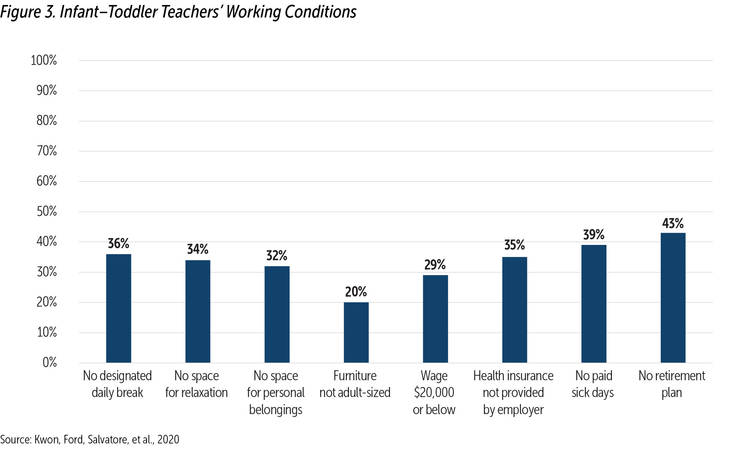
The emotional well-being of child care staff affect their ability to connect with the young children who spend many hours in their care.
The chaos of the pandemic for child care programs, coupled with low wages and continuing staff shortages, has had a significant impact on the well-being of early childhood educators.
High quality early childhood programs can yield a $4 – $9 dollar return per $1 invested.
Despite the cost for establishing high-quality early childhood programs, studies have shown they are actually cost savers for society over the long run.
According to Nobel-Prize winning economist, James J. Heckman, “The highest rate of return in early childhood development comes from investing as early as possible, from birth through age five, in disadvantaged families. Starting at age three or four is too little too late.”
Only five states and Puerto Rico require infant-toddler teachers to have credentials beyond a high school diploma.
Puerto Rico broke new ground by requiring a bachelor’s degree for early care and education teachers.
While a few states require a Child Development Associate® (CDA) or equivalent state credential, overall, state requirements fall short of Early Head Start’s standard that teachers have a minimum of a CDA or comparable credential.
Early Head Start only reaches 11% of income-eligible families.
And only 4.7% of federally eligible infants and toddlers receive Child Care and Development Fund funded child care.
Early Head Start (EHS) is a proven, effective early development and family support program and should be fully funded to reach all eligible infants and toddlers, as well as significantly more pregnant people who could benefit from its support.
Without additional federal funding, approximately 70,000 child care centers are projected to close and 3 million children could lose access to care.
Strengthening our early care and education system is an urgent priority that must be addressed at the federal and state levels.
The president has proposed $16 billion in emergency funding for the child care sector. Congress needs to act as a first step to stabilize the nation’s child care system.
Join our Think Babies advocacy network to learn about policies that can better our child care system and how you can make a difference.


